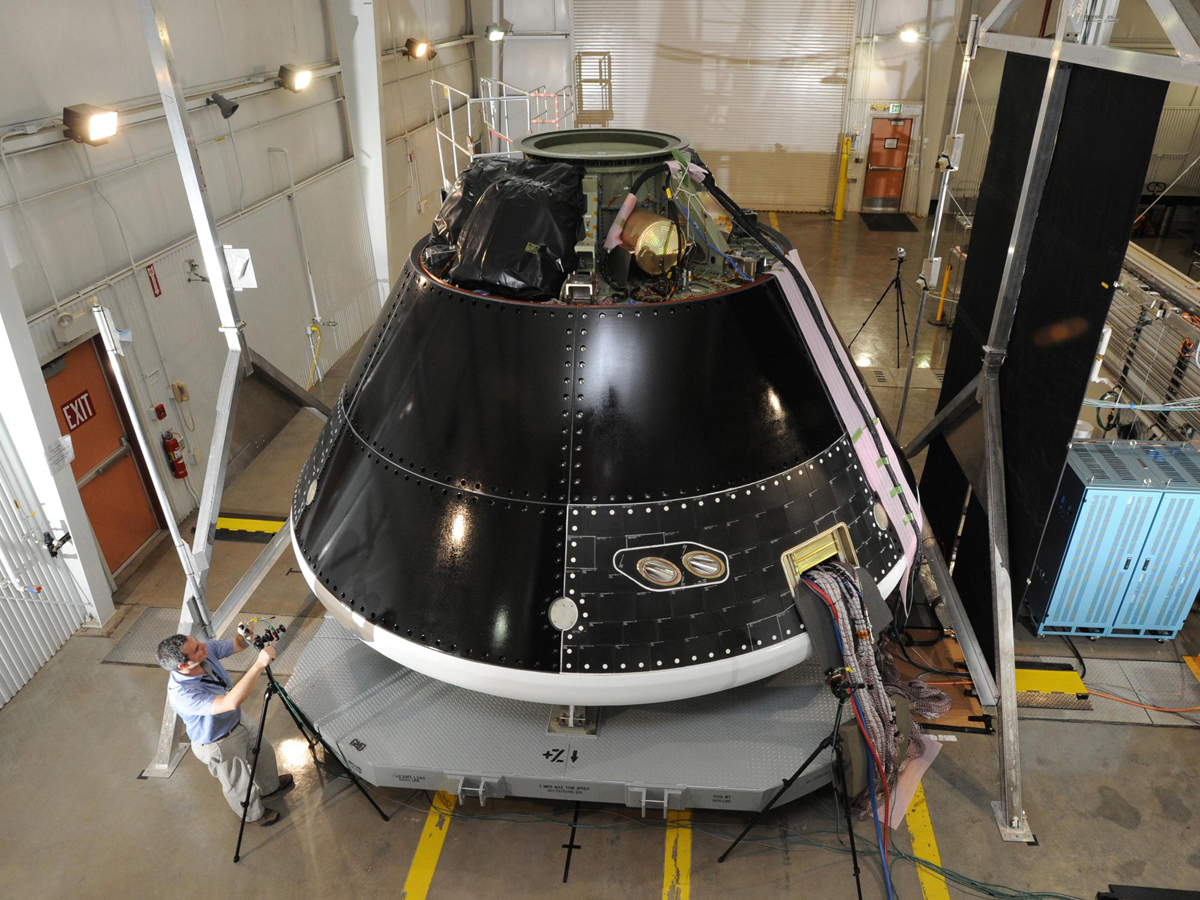Final Countdown! NASA's Orion Spacecraft by the Numbers

The countdown has begun for the first test flight of NASA's Orion spacecraft, which is scheduled to launch from Cape Canaveral Air Force Station in Florida at 7:05 a.m. EST (1205 GMT) on Thursday (Dec. 4).
You can watch Orion's 4.5-hour unmanned flight live on Space.com, courtesy of NASA TV. The webcast will begin early Thursday at 4 a.m. EST (0900 GMT).
The Orion capsule was designed and built to take humans to distant destinations in the solar system, like an asteroid or Mars. On the eve of this historic launch, here's a by-the-numbers look at the spacecraft:
20,000: The speed, in mph, at which Orion will re-enter Earth's atmosphere (32,000 km/h) during Thursday's test flight.
4,000: Degrees Fahrenheit (2,200 degrees Celsius) — the temperature around the outside of Orion as it re-enters Earth's atmosphere.
3,600: Orion's maximum altitude in miles above Earth during the test flight (5,800 kilometers) — more than 15 times the International Space Station's orbital altitude.
1,200: The number of sensors aboard the capsule that will record stresses, vibration, temperature, pressure and acceleration during the flight.
Breaking space news, the latest updates on rocket launches, skywatching events and more!
11: The number of parachutes Orion will deploy to slow its descent into Earth's atmosphere before its planned splashdown Thursday in the Pacific Ocean.
10: The width of Orion's target landing area, in miles (16 km), located more than 200 miles (320 km) off the coast of California.
5: The diameter of the Orion crew module in meters (16.5 feet). Orion has a volume more than 2.5 times that of NASA's Apollo capsule.
4.5: The duration of Orion's first test flight, in hours.
4: The number of crewmembers who will be able to ride aboard Orion.
3: Hours after liftoff on Thursday when Orion should reach its maximum altitude above Earth.
2: The number of seconds it would take Orion's Launch Abort System to accelerate the crew module from 0 to 500 mph (0 to 800 km/h). The Launch Abort System is an emergency measure to move the crew to safety if something goes wrong during a launch.
1: Exploration Flight Test-1 is Orion's first trip to space, and the start of a new era of manned space flight.
Follow Calla Cofield @callacofield. Follow us @Spacedotcom, Facebook and Google+. Original article on Space.com.

Calla Cofield joined Space.com's crew in October 2014. She enjoys writing about black holes, exploding stars, ripples in space-time, science in comic books, and all the mysteries of the cosmos. Prior to joining Space.com Calla worked as a freelance writer, with her work appearing in APS News, Symmetry magazine, Scientific American, Nature News, Physics World, and others. From 2010 to 2014 she was a producer for The Physics Central Podcast. Previously, Calla worked at the American Museum of Natural History in New York City (hands down the best office building ever) and SLAC National Accelerator Laboratory in California. Calla studied physics at the University of Massachusetts, Amherst and is originally from Sandy, Utah. In 2018, Calla left Space.com to join NASA's Jet Propulsion Laboratory media team where she oversees astronomy, physics, exoplanets and the Cold Atom Lab mission. She has been underground at three of the largest particle accelerators in the world and would really like to know what the heck dark matter is. Contact Calla via: E-Mail – Twitter
